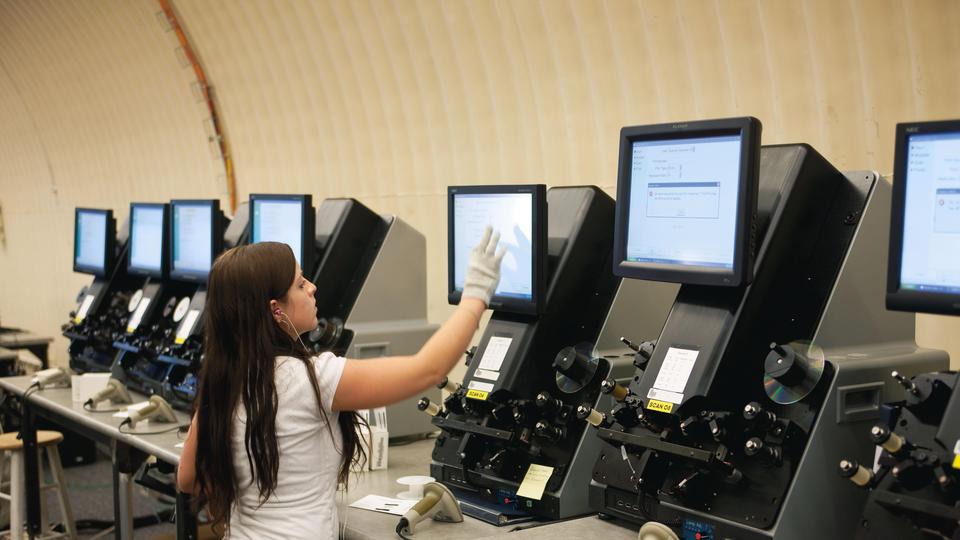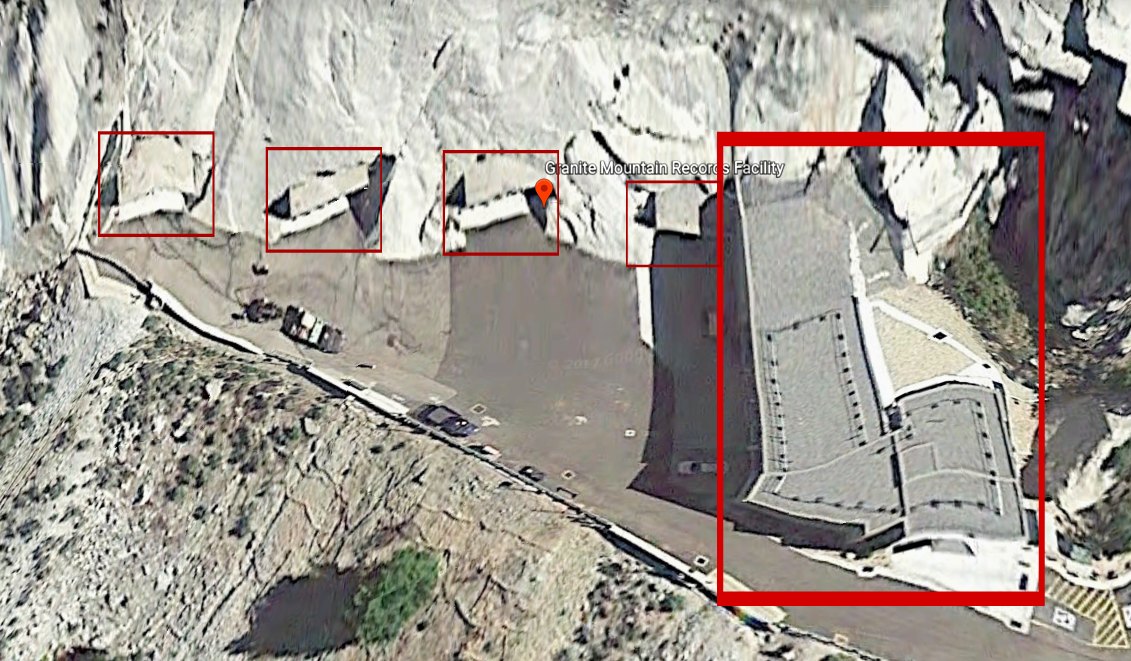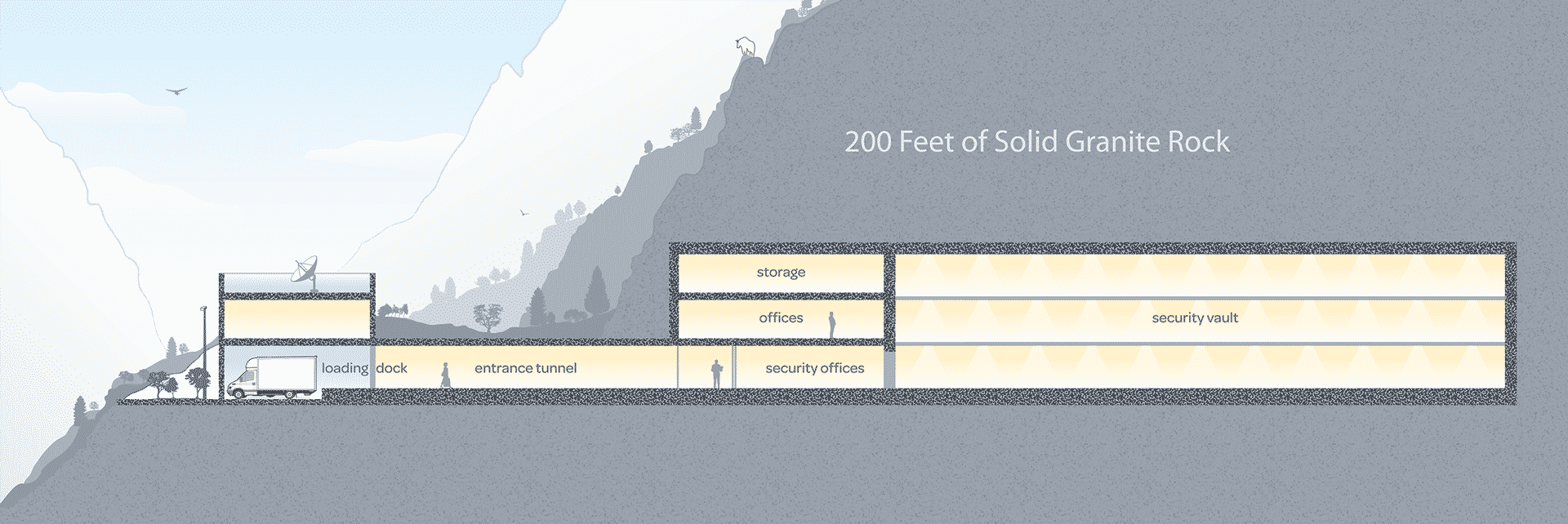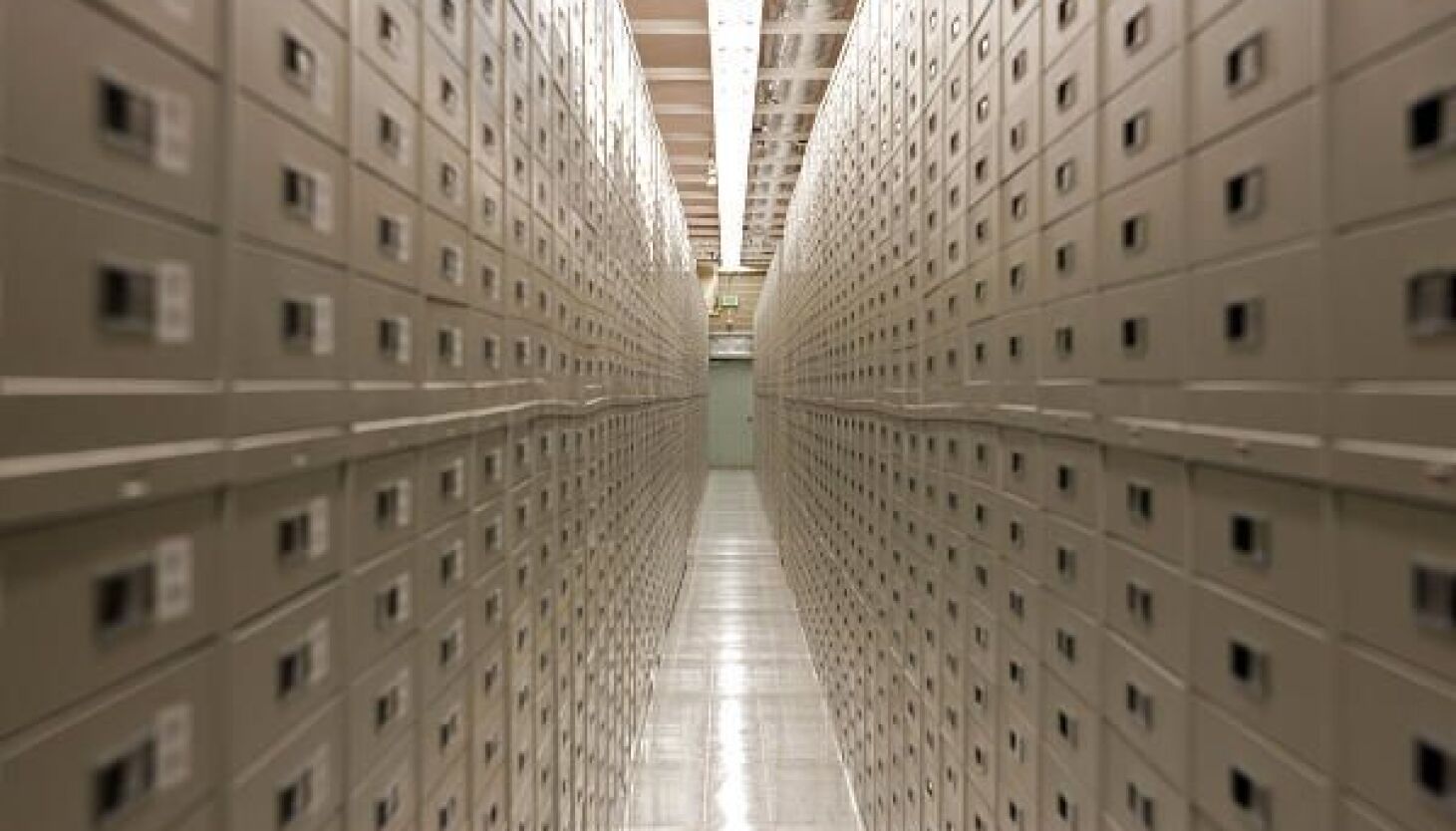The World's Most Secure Buildings: The Granite Mountain Records Vault in Salt Lake City, Utah
November 10, 2022
Granite Mountain is a mass of solid rock located one mile up Little Cottonwood Canyon in the Wasatch Range of Utah, near Salt Lake City. Despite its name, Granite Mountain is mainly composed of quartz monzonite, an igneous rock similar to granite in appearance, physical characteristics, and chemical composition. This is the same material used to construct the Salt Lake Temple and the facade of the Latter-day Saints (LDS) Conference Center.

The Church of LDS built the Granite Mountain Records Vault in 1965 to preserve and protect records of importance to the church, including its vast collection of family history microfilms.
The vault is a large archive and is excavated 600 feet into the north side of Little Cottonwood Canyon. Microfilm masters (negatives used for duplication and digitization) occupy 60% of Granite Mountain’s space.
The Granite Mountain site features a dry, environment-controlled facility used for long-term record storage, as well as administrative offices, shipping and receiving docks, a processing facility, and a restoration laboratory for microfilm.
What makes the Granite Mountain Records Vault one of the world’s most secure buildings? Read on to find out.

Facts About the Granite Mountain Records Vault
-
The vault is located under 700 feet of solid mountain stone
-
Excavation began in 1960
-
The vault boasts the world’s largest collection of family history information
-
There are three tunnels and four cross-tunnels inside the vault with over 65,000 square feet
-
The vault has reinforced entrance doors weighing nine to fourteen tons each that are said to be able to withstand a nuclear blast
-
There is also a 33,000-gallon reservoir of natural spring water used for microfilm reproduction and other processes in the vault
-
About 675 feet of granite rock guard the tunnels from above
-
Steel and concrete line the tunnels, with banks of metal storage cabinets reaching ten feet high
-
Arched interiors are painted in pastel colors to alleviate the monotony and eliminate the cavernous atmosphere
-
The first microfilm rolls were transferred in April 1963, even though construction was not completed until December 1963
-
The vault was constructed for $2 million

Construction of the Granite Mountain Records Vault
The Granite Mountain Records Vault is a massive excavation reaching 600 feet into the north side of the canyon. Constructed between 1958 and 1963 for $2 million, it consists of two main areas. The office and laboratory section sits beneath an overhang of about 300 feet of granite, and houses shipping and receiving docks, microfilm processing and evaluation stations, and administrative offices.
Under 700 feet of stone, the vault is situated farther back in the mountain behind the laboratory section and consists of six chambers (each 190 feet long, 25 feet wide, and 25 feet high), which are accessed by one main entrance and two smaller passageways.
Specially constructed Mosler doors weighing fourteen tons (at the main entrance) and nine tons (guarding the two smaller entrances) are designed to withstand a nuclear explosion. In the six chambers, nature maintains constant humidity and temperature readings optimum for microfilm storage.
Each chamber contains banks of steel cabinets ten feet high. In February 1991, about 1.7 million rolls of microfilm, in 16 mm and 35 mm formats, were housed in two of the six chambers. Alternate media, such as optical disks with greater capacity for storage than microfilm, were being considered for use, making a further expansion of the vault unnecessary.
Today, the LDS Church claims to have the records of over 12 billion deceased people, some going all the way back to the 1st century CE. Data collectors on 220 teams in forty-five countries, along with hundreds of thousands of Mormon volunteers, are digitizing millions of paper records, photos, microfilm, and more. By 2014, the church records were thirty-two times the size of the data recorded by the U.S. Library of Congress.

What Is in the Granite Mountain Records Vault?
Records stored in Granite Mountain Records Vault include genealogical and family history information contained in over 2.4 million rolls of microfilm and one million microfiches. This equals about three billion pages of family history records. About 40,000 new microfilm rolls are added to the vault each year.
The vault also encloses 3.5 billion images on microfilm, microfiche, and digital media. These images are collected through agreements with archives, libraries, and churches from more than one-hundred countries. Copies of these records are given free of charge to the record custodian and on occasion, additional copies are provided to replace records that may have been lost in a natural disaster or fire.
Since 1999, the church has been digitizing the genealogical microfilms stored in the vault. The genealogical information contained in these microfilms is collected from churches, libraries, and governmental agencies and consists primarily of birth, marriage, and death registers, wills and probates, census reports, and other documents that can be used to establish individual identities.
Latter-day Saints use such information to assemble family group charts and pedigrees to bind together ancestral lines of kinship through sealing ordinances performed by proxy in temples. In the religion, such ordinances are considered essential for the salvation of the dead, i.e., those who died without hearing the full message of the gospel of Jesus Christ.
However, digitization initially was a tedious process. Scanners of that era had trouble reading underexposed and overexposed images as light densities varied even on the same microfilm roll. As a result, operators had to closely watch for problems, stop, back up, readjust, and repeat. Conversion to digital images was expected then to take more than a century.
Over the years, the church has worked with international scanner manufacturers to develop improved scan rates and procedures. This allows them to produce ten times the images they were able to do five years ago. The church makes the records publicly available through its Family History Centers, as well as online at its FamilySearch website.
In addition to genealogical preservation and storage, the Granite Mountain Records Vault serves as the deep archives for a myriad of church materials, including:
-
Scriptures in every language published
-
Large leather-bound temple ordinance books that were hand-kept through the 1960s
-
Materials and minutes from the meetings of general authorities of the church
-
Financial records
-
Backup tapes and audio-visual masters from “Legacy” to “Johnny Lingo” (videos produced by LDS Films)

What Makes the Granite Mountain Records Vault One of the World’s Most Secure Buildings?
For security reasons, there is no public access to the Granite Mountain Records Vault, helping to protect the records from tampering, foreign materials such as dirt and dust, and unwanted changes to temperature or humidity. As previously mentioned, this near-impregnable facility is situated under as much as 700 feet of stone. It has an internal water reservoir and doors strong enough to withstand a nuclear blast. There are six separate vault chambers that are accessible by one main and two smaller entrances.
The biggest two advantages provided by the Granite Mountain Records Vault are a protected environment from intruders, fire, earthquake, and disaster, as well as a stable storage environment. Improvements in 2001 led to constants of fifty-five-degree temperature and 35% humidity.
Secure Your Facility with Identiv
Identiv’s flexible physical access control system (PACS) and video intelligence solutions deliver the highest security at the lowest cost. Regardless of your physical location, effortlessly manage access control through our robust, feature-rich systems, hardware, and software.
To learn more about our PACS solutions, contact us at +1 888.809.8888 or
sales@identiv.com.